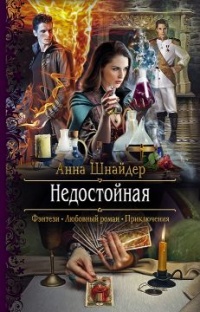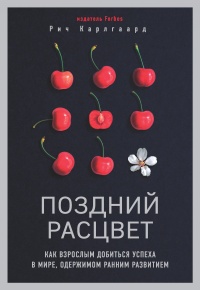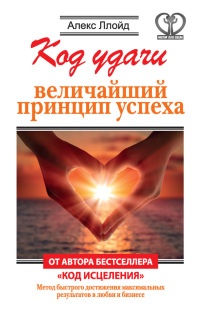Книга Парадокс страха. Как одержимость безопасностью мешает нам жить - Фрэнк Фаранда
Шрифт:
Интервал:
Закладка:
Freud, S. (1921). A general introduction to psychoanalysis (pp. 340–355). New York: Boni and Liveright. См.: Фрейд З. Введение в психоанализ: Лекции. – М.: Наука, 1989.
Freud, S., & Breuer, J. (2004). Studies in hysteria. Penguin. См.: Фрейд З., Брейер Й. Исследования истерии. – СПб.: Скифия, 2020.
Freud, S., Jung, C. G., & McGlashan, A. (1994). The Freud-Jung Letters: The Correspondence Between Sigmund Freud and CG Jung (Vol. 135). Princeton University Press. См.: Фрейд З., Юнг К. Г. Полный архив переписки. В 2 т. – М.: Касталия, 2018.
Frijda, N. H. (1987). Emotion, cognitive structure, and action tendency. Cognition and emotion, 1 (2), 115–143.
Gallwey, W. T. (1974). The Inner Game of Tennis: The Classic Guide to the Mental Side of Peak Performance. New York: Random House.
Gentner, D., Bowdle, B., Wolff, P., & Boronat, C. (2001). Metaphor is like analogy. In Gentner, D., Holyoak, K., & Kokinov, B. (Eds.), The analogical mind: Perspectives from cognitive science (pp. 199–253). Cambridge, MA: The MIT Press.
Gibson, E. J., & Walk, R. D. (1960). "The visual cliff." Scientific American, 202 (4), 64–71.
Glassner, B. (2010). The Culture of Fear: Why Americans Are Afraid of the Wrong Things: Crime, Drugs, Minorities, Teen Moms, Killer Kids, Muta. Hachette UK.
Gleick, J. (2003). Isaac Newton. New York: Random House.
Gleick, J. (2010). At the beginning: more things in heaven and earth. In Bryson, B. (Ed.), Seeing further: The story of science, discovery, and the genius of the Royal Society (pp. 17–35). New York, NY: William Morrow/HarperCollins.
Golinski, J. (1988). The secret life of an alchemist. In Fauvel, J., Flood, R., Shortland, M. & Wilson, R. (Eds.), Let Newton be! (pp. 147–167). Oxford, England: Oxford University Press.
Gomes, P. J. (2000). Introduction to the second edition. In Tillich, P. The courage to be (2nd ed.) (pp. xi – xxxiii). New Haven & London: Yale University Press.
Goswami, U. (2001). Analogical reasoning in children. In Gentner, D., Holyoak, K., & Kokinov, B. (Eds.), The analogical mind: Perspectives from cognitive science (pp. 437–470). Cambridge, MA: The MIT Press.
Grassian, S. (2006). Psychiatric effects of solitary confinement. Wash. UJL & Pol'y, 22, 325.
Gregoire, C. (2014, October 22). What Americans fear most. The Huffington Post.
Greene, M. (2001). Variations on a blue guitar: The Lincoln Center Institute lectures on aesthetic education. New York and London: Teachers College Press.
Grossman, S. (2015, October 26). What Americans fear most, according to their Google search histories. TIME Magazine.
Hall, G. S. (1907). Youth: Its education, regimen, and hygiene. Comet Content Providers.
Harrison, P. (2001). Curiosity, forbidden knowledge, and the reformation of natural philosophy in early modern England. Isis, 92 (2), 265–290.
Haugen, G. A., & Boutros, V. (2014). The locust effect: Why the end of poverty requires the end of violence. New York, New York: Oxford University Press.
Henry, J. (1988). Newton, matter and magic. In Fauvel, J., Flood, R., Shortland, M. Wilson, R. (Eds.), Let Newton be! (pp. 127–145). Oxford, England: Oxford University Press.
Himmelfarb, G. (2005). The roads to modernity: The British, French, and American enlightenments. New York: Random House.
Himmelfarb, G. (2006). The moral imagination: From Edmund Burke to Lionel Trilling. Chicago, Illinois: Ivan R. Dee, Publisher.
Hoffner, C. A., & Levine, K. J. (2005). Enjoyment of mediated fright and violence: A meta-analysis. Media Psychology, 7 (2), 207–237.
Hofstadter, D. R. (2001). Epilogue: Analogy as the core of cognition. In Gentner, D., Holyoak, K., & Kokinov, B. (Eds.), The analogical mind: Perspectives from cognitive science (pp. 499–538). Cambridge, MA: The MIT Press.
Hofstadter, D. R. (2007). I am a strange loop. New York: Basic Books.
Holmes, J. (2012). Seeing, sitting and lying down: Reflections on the role of visual communication in analytic therapy. Psychoanalytic Psychotherapy, 26 (1), 2–12.
Hublin, J. J. (2005). Evolution of the human brain and comparative paleoanthropology. In Dehaene, S., Hauser, M. D., Duhamel, J. R., & Rizzolatti, G. (Eds.), From monkey brain to human brain: A Fyssen Foundation symposium (pp. 57–71). Cambridge, MA: The MIT Press.
Hutchins, R. M. (1952), Biographical Note in Hutchins, R. M. (Ed.). (1952). Great books of the western world: Francis Bacon (Vol. 30, pp. v – vi). Chicago, Ill.: W. Benton. Encyclopedia Britannica, Inc.
Introduction [Fauvel, J. et al.], (1988). In Fauvel, J., Flood, R., Shortland, M. & Wilson, R. (Eds.), Let Newton be! (pp. 1–21). Oxford, England: Oxford University Press.
Jouvet, M. (1999). The paradox of sleep: The story of dreaming (L. Garey, Trans.). Cambridge, MA: The MIT press. (Original work published 1993).
Jung, C. (1963) Memories, dreams, reflections. New York: Pantheon Books. См.: Юнг К. Воспоминания. Сновидения. Размышления. – Минск: Харвест, 2003.
Jung, C. G. (1917). On the psychology of the unconscious. Coll. wks, 7, 9–119. См.: Юнг К. Психология бессознательного. – М.: Канон Плюс, 2012.
Kaku, Michio (2014). The future of the mind: The scientific quest to understand, enhance, and empower the mind. New York, London, Toronto: Doubleday. См.: Каку М. Будущее разума. – М.: Альпина нон-фикшн, 2018.
Karlsen, C. F. (1998). The devil in the shape of a woman: Witchcraft in colonial New England. New York and London: WW Norton & Company.
Klinnert, M. D., Campos, J., Source, J. F., Emde, R. N., & Svejda, M. J. (1983). Social referencing. Emotion, 2, 57–86.
Kosslyn, S. M. (2005). Reflective thinking and mental imagery: A perspective on the development of posttraumatic stress disorder. Development and Psychopathology, 17 (3), 851–863.
Kurzweil, R. (2005) The Singularity Is Near: When Humans Transcend Biology. New York: Penguin.
Lakoff, G. (2006). The aesthetic faculty. In Turner, M. (Ed.) The artful mind: Cognitive science and the riddle of human creativity (pp. 153–170). New York, NY: Oxford University Press. См.: Лакофф Дж., Джонсон М. Метафоры, которыми мы живем. – М.: URSS, ЛКИ, 2017.
Lanius, U. F. (2014). Dissociation and endogenous opioids: a foundational role. In Lanius, U. F., Paulsen, S. L., & Corrigan, F. M. (Eds.), Neurobiology and treatment of traumatic dissociation: Towards an embodied self (Kindle edition. pp. 81–104). New York, NY: Springer Publishing Company.

























